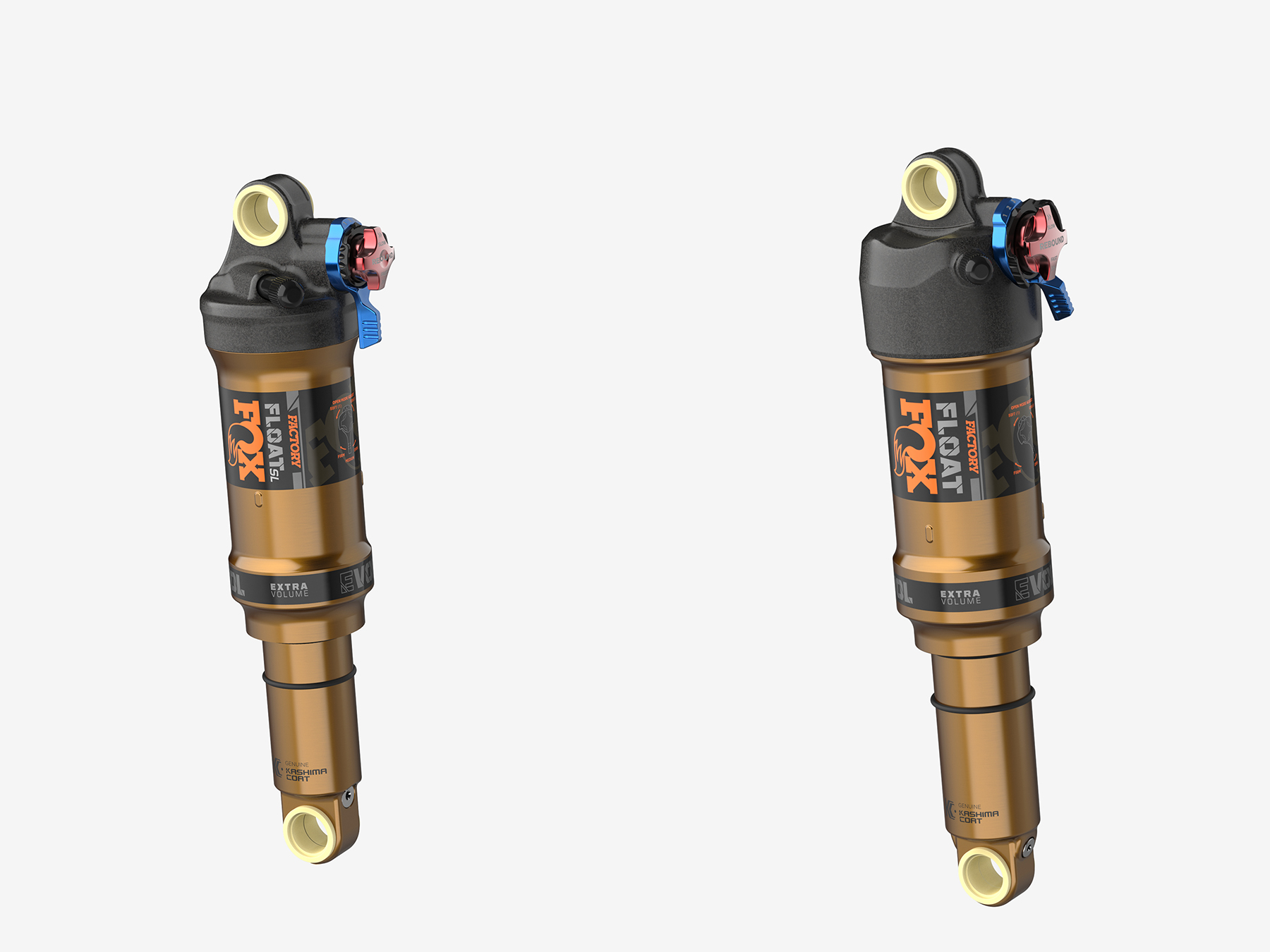Fox Float and Float SL
MSRP:
- Float: $349–$499
- Float SL: $349–$519
Adjustments:
- Float: Rebound; two-position compression switch with three-position adjuster for “Open” mode
- Float SL: Rebound; three-position compression switch with three-position adjuster for “Open” mode
Stated Weight:
- Float: 293 g (170 x 35 mm)
- Float SL: 235 g (170 x 35 mm)
- 170 mm
- 190 mm
- 210 mm
- 230 mm
- 145 mm
- 165 mm
- 185 mm
- 205 mm

- 170 mm
- 190 mm
- 210 mm
- 145 mm
- 165 mm
- 185 mm
Intro
The Fox Float DPS has been used on a wide range of bikes over the years, from true XC race rigs through mid-travel Trail bikes, and in what seems like a nod to the breadth of tasks it was being assigned, Fox is replacing the DPS with not one but two new shocks — the Float and the Float SL. The top-level details of their designs aren’t wildly different, but instead, they’re largely similar designs on paper, with the Float being the more all-around lightweight Trail option, and the Float SL being the version for folks who are counting every possible gram.

Design
In terms of high-level design and features, the Float and Float SL don’t appear to be too wildly different from the Float DPS that they replace — they’re both air-sprung inline shocks with a self-equalizing negative spring plus adjustable rebound and a climb switch with a three-position compression adjuster for the “open” mode. The Float SL keeps the thee-position switch used on the Float DPS, whereas the Float pares it down to just two positions, as on the bigger Float X. The Float also features a beefier bottom-out bumper and a larger-volume air can than the Float SL, which Fox says makes for better small-bump sensitivity and midstroke support, at the expense of a little weight. The Float also gets new volume tokens in smaller 0.1 cubic-inch increments, in place of the 0.2 cubic-inch steps on the outgoing Float DPS.
The dampers in both shocks are all new designs, based on the layout used in the Float X but reconfigured for the inline form factor. Fox says that the Float gets a substantially bigger main piston and IFP than the Float DPS for more consistent damper performance, while the Float SL pares those things back down in the name of weight savings; the range of damper adjustments on the Float is also apparently wider, though with only three clicks of adjustment for the open mode, it’ll be interesting to see whether or not that translates into especially big jumps between settings.

Fox says that the Float is about 150 g lighter than the Float X in an equivalent size and that the Float SL is another 58 g lighter than that. Both are compatible with remotes for the climb switch if you want to run one. The Float uses bolt-on travel limiting spacers inside the air can (which can be installed or removed at home with basic hand tools, just like on the Float X) in 2.5 mm increments. In addition to the spacers themselves, you’ll need different-length screws (M3 flatheads) to account for the change in spacer height if you’re tweaking things one way or the other.
The fact that the Float is available in up to a 230 mm eye-to-eye (and the equivalent 205 mm trunnion size) is an indication that Fox is imagining that version being used on some pretty long-travel bikes, which is interesting, given that they’ve got two bigger air shocks in their lineup in the Float X and Float X2. But as they put it, the inline form factor of the Float not only saves weight but also opens up room for things like water bottles and other storage, especially on smaller frame sizes, and they seem to be positioning the Float as a legit competitor to the Float X for folks who care about the weight savings and / or increased space that the smaller form factor opens up.
Some Questions / Things We’re Curious About
(1) Fox says that the piston design and valving in the Float SL are “borrowed” from the Float, so how similar are the two in terms of performance?
(2) And how does the new Float stack up against its bigger sibling, the Float X?
Bottom Line (For Now)
The new Float and Float SL don’t look like wild departures from the Float DPS that they jointly replace on paper, but it’ll be interesting to see how they compare on the trail (plus, the Float DPS was already a good lightweight shock). We’ve got a Float on the way for review and will have a lot more to say about how it stacks up soon. Stay tuned.


It has been quite a while since Fox announced these shocks, but there’s very little information about how they ride. I am keen to replace the underwhelming Float DPS remote on my YT Izzo. That bike is pretty limited in what will fit. It has to be an in-line shock. It looks like the new Float could be the best option.
A question I have is, how do the volumes compare between the Float DPS and the new 2024 Float? Will it be significantly more shock in the same physical space?
I am really looking forward to your review.
Fox has offered a whole bunch of different eyelets and air cans on the DPS over the years, and the exact dimensions vary, but the Float has similar physical dimensions to the bigger DPS variants.
It took a little longer to get our review shock than we’d hoped, but the full review will be up soon.